Egeria densa
Scientific name: Egeria densa
Family: Hydrocharitaceae
Maximum size reached under cultivation: 40 - 100 cm (15.75 - 39.37 inch)
014
Recommended pH range: 6.8 - 7.9
Recommended water hardness: 4 - 18°dGH (71.43 - 321.43ppm)
0°C 32°F30°C 86°F
Recommended temperature range: 15 - 25 °C (59 - 77°F)
Preferred propagation method: Cuttings
Native to: South America
Growth rate: Fast
Recommended substrate: Rocky
Lighting requirements: Bright
Ideal placement in tank: Background
Common Names
Brazilian Waterweed, Anacharis
Origin
Egeria densa originates from South America, specifically from regions in Brazil, Argentina, and Uruguay. In its natural habitat, this plant thrives in slow-moving freshwater bodies such as lakes, ponds, and streams, where it plays a crucial role in oxygenating the water and providing shelter for aquatic species.
Growing Conditions
Egeria densa is a fast-growing, fully submersible plant that flourishes under bright lighting. It is well-adapted to both tropical and cold-water environments, making it a versatile choice for various aquarium setups.
It grows best in rocky substrates and requires stable water conditions. The recommended pH range for this species is 6.8 - 7.9, with water hardness between 4 - 18 dGH. The ideal temperature for its growth is 15 - 25°C (59 - 77°F), making it suitable for both tropical and cold-water aquariums.
Lighting Requirements
Egeria densa requires bright lighting to sustain its rapid growth and maintain its vibrant green coloration. If lighting levels are too low, the plant may become leggy, with extended internodal spaces, reducing its visual appeal. Consistently strong light exposure encourages denser, more compact growth, making it an excellent choice for aquascaping.
Planting Area
With its tall, bushy growth, Egeria densa is best suited for the background of an aquarium. When planted in clusters, it creates a lush, dense environment that enhances the visual appeal of the tank while also serving as a natural shelter for fish and fry. It can be grown anchored in the substrate or left floating to provide additional surface cover.
Propagation
Egeria densa propagates easily through cuttings. To propagate, simply take a stem cutting from the parent plant, remove the lower leaves, and place the cutting into the substrate. Within a short period, roots will develop, securing the plant in place. Alternatively, cuttings can be left floating, where they will continue growing and eventually form new roots.
Difficulty
This plant is easy to grow, provided it receives sufficient lighting. It adapts well to various water conditions and requires minimal maintenance. However, due to its rapid growth, regular trimming may be necessary to prevent it from overtaking the tank. Inadequate lighting can cause it to grow sparsely, making it less effective as a decorative plant.
Short Description
Egeria densa, commonly known as Brazilian Waterweed or Anacharis, is one of the most widely used aquatic plants in the aquarium hobby. It is valued for its fast growth, oxygenating properties, and ability to help control algae by competing for nutrients.
Its versatility allows it to be kept in both tropical and cold-water tanks. Many aquarists use it in goldfish tanks, as it is one of the few plants that goldfish may avoid eating due to its firm leaves. Additionally, it provides excellent cover for small fish and fry.
However, in some regions, Egeria densa is considered an invasive species and has been banned due to its tendency to outcompete native plants and clog waterways. Always check local regulations before introducing this plant into an outdoor pond or natural water system.

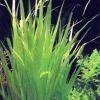 Blyxa aubertii
Blyxa aubertii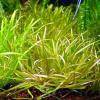 Blyxa japonica
Blyxa japonica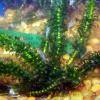 Elodea canadensis
Elodea canadensis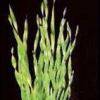 Vallisneria asiatica
Vallisneria asiatica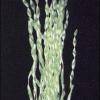 Vallisneria contortionist
Vallisneria contortionist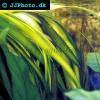 Vallisneria gigantea
Vallisneria gigantea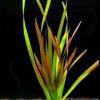 Vallisneria rubra
Vallisneria rubra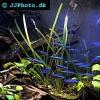 Vallisneria spiralis
Vallisneria spiralis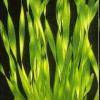 Vallisneria torta
Vallisneria torta